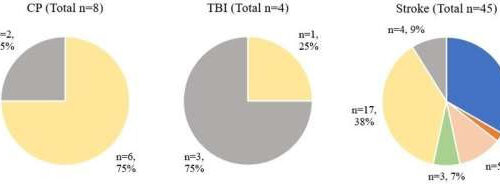by Kessler Foundation Studies (N=57) divided into three pie charts based on population (cerebral palsy, traumatic brain injury, stroke) and further divided based on study type. Credit: Kessler Foundation A team of New Jersey researchers reviewed the evidence for the impact of robotic exoskeleton devices on recovery of ambulation among individua5ls with acquired brain injury, laying out...
Tag: <span>Robotic Exoskeletons</span>
Ankle exoskeleton fits under clothes for potential broad adoption
A new lightweight, low-profile and inexpensive ankle exoskeleton could be widely used among elderly people, those with impaired lower-leg muscle strength and workers whose jobs require substantial walking or running. Developed by Vanderbilt mechanical engineers, the device is believed to be the first ankle exoskeleton that could be worn under clothes without restricting motion. It does not require additional components such as batteries or...
Robotic Exoskeletons Show Promise As Tool to Help Kids with Cerebral Palsy Walk Easier
In the first clip, the boy appears to drag his feet as he walks, while his knees—particularly the left one—stay bent throughout his steps. In the second clip, his knees remain bowed inward. But his legs—now clad in a robotic exoskeleton—swing more as they move, and his feet lift off the ground and his knees...

